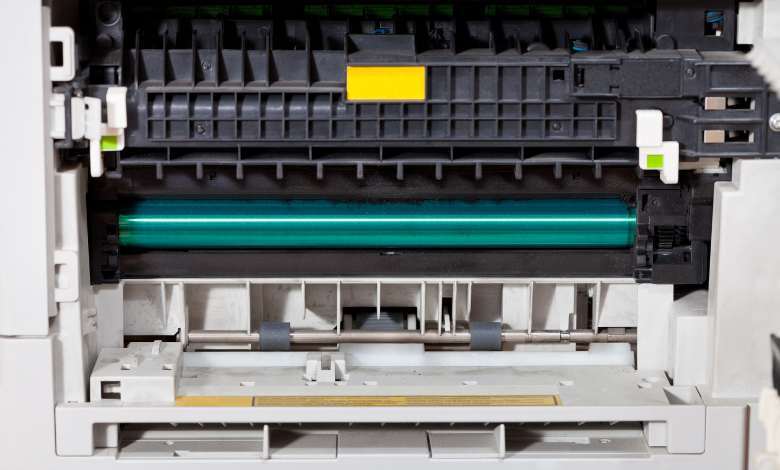 We are increasingly dependent on printers for both personal and professional purposes, thanks to the proliferation of digital technologies. Whether we’re printing important documents for work, school assignments, or even our cherished family photos, printers play a significant role in helping us put our thoughts and memories on paper. However, have you ever wondered how these remarkable machines function behind the scenes? One crucial component that powers your printer’s performance is the printer drum. Taking a look at how printer drums work, what they are, when to replace them, and how to store them, we’ll explore what printer drums are.
We are increasingly dependent on printers for both personal and professional purposes, thanks to the proliferation of digital technologies. Whether we’re printing important documents for work, school assignments, or even our cherished family photos, printers play a significant role in helping us put our thoughts and memories on paper. However, have you ever wondered how these remarkable machines function behind the scenes? One crucial component that powers your printer’s performance is the printer drum. Taking a look at how printer drums work, what they are, when to replace them, and how to store them, we’ll explore what printer drums are.
-
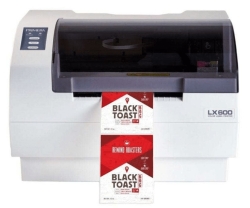 Primera LX600 Color Label Printer SKU: LX600$1,995.00
Primera LX600 Color Label Printer SKU: LX600$1,995.00
FREE SHIPPING over $199*
Orders before 12PM EST usually Ship Same Business Day - Product on sale
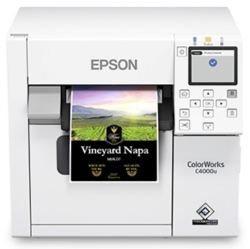 Epson C4000/CW-C4000 ColorWorks Inkjet Label Printer (Gloss) SKU: C31CK03A9991Original price was: $2,399.00.$2,199.00Current price is: $2,199.00.
Epson C4000/CW-C4000 ColorWorks Inkjet Label Printer (Gloss) SKU: C31CK03A9991Original price was: $2,399.00.$2,199.00Current price is: $2,199.00.
FREE SHIPPING over $199*
Orders before 12PM EST usually Ship Same Business Day -
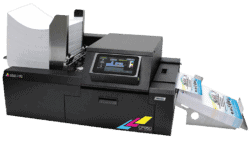 Afinia CP950 Envelope Packaging and Box Color Label Printer SKU: 35256$18,995.00
Afinia CP950 Envelope Packaging and Box Color Label Printer SKU: 35256$18,995.00
FREE SHIPPING over $199*
Orders before 12PM EST usually Ship Same Business Day
What is a Printer Drum?
How does a printer drum work? Let’s begin at the beginning. Photoreceptor drums, also known as printer drums, are essential parts of laser printers. Your printed pages consist of text and images created by the component that transfers toner to paper.
Laser printers create an electrostatic image of content to be printed by scanning the drum surface with a laser beam. Toner particles transfer from the drum to the paper by being attracted to the image on the paper. In order for your final printout to exist, the paper must pass through a fuser unit that uses heat and melts the toner, adhering it to the paper permanently.
Printer Drums: How Do They Work?
To understand how printer drums work, let’s break down the process into a few key steps:
- Electrostatic Image Formation: The printer drum starts as a positively charged surface. The drum’s surface is discharged by laser beams or LEDs, to create electrostatic images of the content to be printed.
- Toner Application: Whenever toner particles are positively charged, they are drawn towards negatively charged drum parts. It is then possible to form the desired text or image by adhering the toner to the electrostatic image.
- Transfer to Paper: The paper is then rolled over the drum. Since the paper is even more positively charged than the drum, it attracts the negatively charged toner from the drum, transferring the image onto the paper.
- Fusing: The paper with the toner image moves through a fuser unit, which applies heat and pressure to melt the toner particles, permanently bonding them to the paper.
- Ejection: Finally, the printed page exits the printer, and you have your document or image.
This intricate dance of electrostatic charges, toner particles, and heat is what brings your digital files to life on paper. It’s fascinating how technology can transform digital information into tangible, printed material.
Is it Possible to Replace Printer Drums?
Now that we understand what a printer drum is and how it functions, you might be wondering whether it’s possible to replace a printer drum when it wears out or becomes damaged. Without a doubt, yes. However, it depends on the printer type you are using.
Toner cartridges and printer drums are usually separate components in laser printers. This means that when the drum reaches the end of its lifespan or becomes damaged, you can typically replace it without having to replace the entire toner cartridge. Drum units are generally less expensive than toner cartridges, so replacing just the drum can keep your printer running smoothly.
Is it Time to Get a New Printer Drum?
Determining when it’s time to replace your printer drum involves monitoring the quality of your prints and the number of pages your printer has produced. Drums may need replacing if they exhibit any of the following symptoms:
- Faded or Light Prints: If your prints appear faded or lighter than usual, it could be because the drum is no longer transferring toner effectively.
- Lines or Spots: Horizontal or vertical lines, as well as spots or streaks on your prints, are often indicative of a damaged or worn-out drum.
- Ghosting: If you see faint, repetitive images of previous prints on your current printouts, it’s a clear sign that the drum is not functioning correctly.
- Page Count: Keep an eye on your printer’s page count. Most printer drums have a rated lifespan in terms of pages printed. If your printer has exceeded this limit, it’s time to consider replacing the drum.
Remember that these issues could also be related to other printer components, such as the toner cartridge or fuser unit. Therefore, it’s essential to troubleshoot and identify the specific source of the problem before purchasing a new drum.
-
 TrojanLabel T2-C Tabletop Volume Press Label Printer SKU: 10000155$33,995.00
TrojanLabel T2-C Tabletop Volume Press Label Printer SKU: 10000155$33,995.00
FREE SHIPPING over $199*
Orders before 12PM EST usually Ship Same Business Day -
 Quick Label QL-120Xe Inkjet Color Label Printer with 1 Year Warranty SKU: 42725300$5,995.00
Quick Label QL-120Xe Inkjet Color Label Printer with 1 Year Warranty SKU: 42725300$5,995.00
FREE SHIPPING over $199*
Orders before 12PM EST usually Ship Same Business Day -
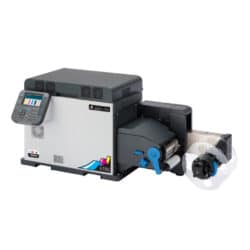 Afinia LT5C CMYK + White Label Printer SKU: 36138$12,495.00
Afinia LT5C CMYK + White Label Printer SKU: 36138$12,495.00
FREE SHIPPING over $199*
Orders before 12PM EST usually Ship Same Business Day
Can I Keep an Extra Printer Drum at Home?
If you own a laser printer and anticipate the need to replace the drum in the future, it’s a good idea to keep a spare drum unit at home. For those who depend heavily on their printer for work or other critical functions, having a spare drum on hand can be extremely helpful.
How Should I Store a Printer Drum?
Proper storage of your spare printer drum is crucial to ensuring it remains in optimal condition until you need to use it. The following tips will assist you in maintaining a good printer drum:
- Keep it in the Original Packaging: Drums should be stored in the original packaging to protect them from light and moisture. Both can negatively affect their performance. If you’ve discarded the original packaging, consider wrapping the drum in a light-proof bag or container.
- Store in a Cool, Dry Place: It is recommended that you store your products in a cool and dry area to avoid humidity-related damage. Keeping the drum away from extreme temperatures can also damage it, so try to keep it away from extreme heat and cold.
- Protect from Light: Direct sunlight and prolonged artificial light exposure are known to adversely affect the drum’s sensitivity. For its integrity to remain intact, it should be stored in a dark place.
- Handle with Care: Move or store the drum gently in order to prevent physical damage. Rough handling can cause scratches or dents, which may affect print quality.
- Check Expiration Date: Make sure you pay attention to the expiration date on your drum unit. It is possible to suffer from print quality issues if you use an expired drum.
Keeping your spare printer drum in optimal condition will ensure that it will be ready for use when needed.
Beating the Drum for Laser Printers
In addition to their speed, precision, and high-quality output, laser printers are also renowned for their reliability. These machines are popular among businesses and offices that generate a large amount of printing. Understanding the key components of a laser printer, including the printer drum, is essential to maintaining their performance.
One of the advantages of laser printers is their ability to produce sharp and consistent prints over an extended period of time. This longevity is partly due to the durability of the printer drum. With proper care and maintenance, a quality laser printer drum can last for thousands of pages.
What is the Difference Between Toner Cartridges and Printer Drums?
It’s essential to distinguish between toner cartridges and printer drums, as they serve distinct functions in a laser printer. Toner cartridges contain toner powder, which is the ink used to create text and images on the paper. The toner is deposited onto the printer drum in the form of a fine powder and then transferred onto the paper.
Printer drums, also known as photoreceptor drums, transmit the laser’s electrostatic image to paper after receiving the toner from the drums. Think of the toner cartridge as the ink source and the drum as the canvas upon which the ink is applied.
In summary, while toner cartridges are responsible for supplying the ink, printer drums are responsible for the actual printing process by transferring the ink onto the paper.
-
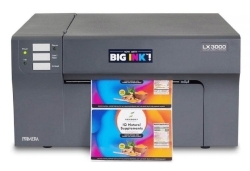 Primera LX3000 Color Label Printer with Big Ink, Pigment Ink SKU: LX3000-pigment$3,195.00
Primera LX3000 Color Label Printer with Big Ink, Pigment Ink SKU: LX3000-pigment$3,195.00
FREE SHIPPING over $199*
Orders before 12PM EST usually Ship Same Business Day - Product on sale
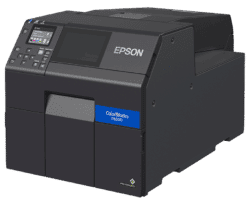 Epson ColorWorks CW-C6000A Matte Color Inkjet Label Printer with Auto Cutter SKU: C31CH76A9981Original price was: $2,899.00.$2,699.00Current price is: $2,699.00.
Epson ColorWorks CW-C6000A Matte Color Inkjet Label Printer with Auto Cutter SKU: C31CH76A9981Original price was: $2,899.00.$2,699.00Current price is: $2,699.00.
FREE SHIPPING over $199*
Orders before 12PM EST usually Ship Same Business Day -
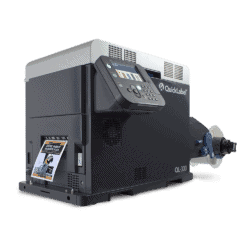 Quick Label QL-300 (120V) Toner CMYK Color Label Printer SKU: 1003-0000002$9,495.00
Quick Label QL-300 (120V) Toner CMYK Color Label Printer SKU: 1003-0000002$9,495.00
FREE SHIPPING over $199*
Orders before 12PM EST usually Ship Same Business Day
How Long Do Printer Drums Last?
The lifespan of a printer drum can vary depending on several factors, including the quality of the drum unit, the type of printer, and the volume of printing you do. In general, printer drums are rated to last a certain number of pages, typically ranging from 10,000 to 30,000 pages or more.
Higher-quality drums tend to have a longer lifespan and may be rated for a higher page count. The wear and tear of the system can still be premature if it is used heavily and poorly maintained.
How Do You Know You Need to Change Your Printer Drum?
As mentioned earlier, there are some clear signs that indicate it’s time to change your printer drum. If you’re experiencing print quality issues such as faded prints, lines, spots, or ghosting, it’s a good indicator that the drum may need replacing.
A drum unit that exceeds its rated page count should also be replaced if it reaches or exceeds the rated page count. Keep in mind that some laser printers have built-in mechanisms to track the drum’s usage and will provide a warning or error message when it’s time to replace the drum.
How Do You Remove a Printer Drum?
When it’s time to replace your printer drum, you’ll need to follow specific steps to safely remove the old drum and install the new one. The following are some general steps you need to take:
- Turn Off the Printer: To ensure your safety during the replacement process, always turn off the printer and unplug it.
- Access the Drum Unit: Open the printer’s access panel to reach the drum unit. This may involve opening a front or top cover, depending on your printer’s design.
- Remove the Toner Cartridge: Toner cartridges must usually be removed first. Cartridges will be released in compliance with the manufacturer’s instructions.
- Remove the Drum Unit: Once the toner cartridge is out, you can access the drum unit. Depending on your printer model, you may need to release a latch or follow specific steps to remove the drum.
- Install the New Drum: Take your new drum unit, remove any protective packaging, and carefully insert it into the printer following the manufacturer’s instructions. Make sure it securely clicks into place.
- Reinstall the Toner Cartridge: If you removed the toner cartridge, now is the time to reinstall it, ensuring it is properly seated.
- Close the Access Panel: Close the access panel securely, making sure it clicks or locks into place.
- Plug In and Power On: Reconnect the printer to the power source, turn it on, and wait for any initialization or calibration processes to complete.
- Test the Printer: Make sure that you print a test page to check if the new drum unit is working properly and that the quality of the print has improved.
- Dispose of the Old Drum: The old drum unit must be disposed of according to local guidelines and regulations since it contains hazardous materials.
Always consult your printer’s user manual for specific instructions on replacing the drum, as the process may vary depending on the make and model of your printer.
Where Can You Get the Best Label Printer and Printer Ink?
TCS Digital Solutions offers the finest label printers and printer ink available, ensuring top-notch printing quality. Their comprehensive selection caters to various needs, making it the ultimate destination for high-quality printing supplies. Discover the best label printers and printer ink with TCS Digital Solutions.
-
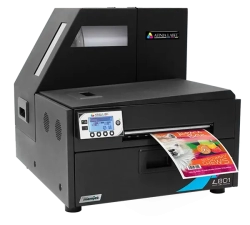 Afinia L801 Plus Commercial Color Label Printer SKU: 32498$8,495.00
Afinia L801 Plus Commercial Color Label Printer SKU: 32498$8,495.00
FREE SHIPPING over $199*
Orders before 12PM EST usually Ship Same Business Day -
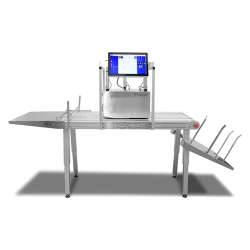 Trojan T3 OPX Over Printer Wide-Format Direct-to-Package Printing SKU: 43160000$26,330.00
Trojan T3 OPX Over Printer Wide-Format Direct-to-Package Printing SKU: 43160000$26,330.00
FREE SHIPPING over $199*
Orders before 12PM EST usually Ship Same Business Day -
 Epson ColorWorks C3500 Inkjet Color Label Printer SKU: C31CD54011 GTIN: 814420980046$2,199.00
Epson ColorWorks C3500 Inkjet Color Label Printer SKU: C31CD54011 GTIN: 814420980046$2,199.00
FREE SHIPPING over $199*
Orders before 12PM EST usually Ship Same Business Day
Conclusion
In conclusion, understanding what a printer drum is and how it functions is essential for anyone who relies on a laser printer for their printing needs. It is important to utilize printer drums to ensure the printing process is accurate and that text and images are correctly transferred.
Knowing the signs of a worn-out or damaged drum and when to replace it can help you maintain the quality of your prints and extend the life of your laser printer. Additionally, storing a spare drum unit correctly can save you time and effort when the need for a replacement arises.
So, the next time you hit that print button and marvel at the crisp, clear pages that emerge from your laser printer, you’ll have a deeper appreciation for the unsung hero at the heart of it all—the printer drum.


